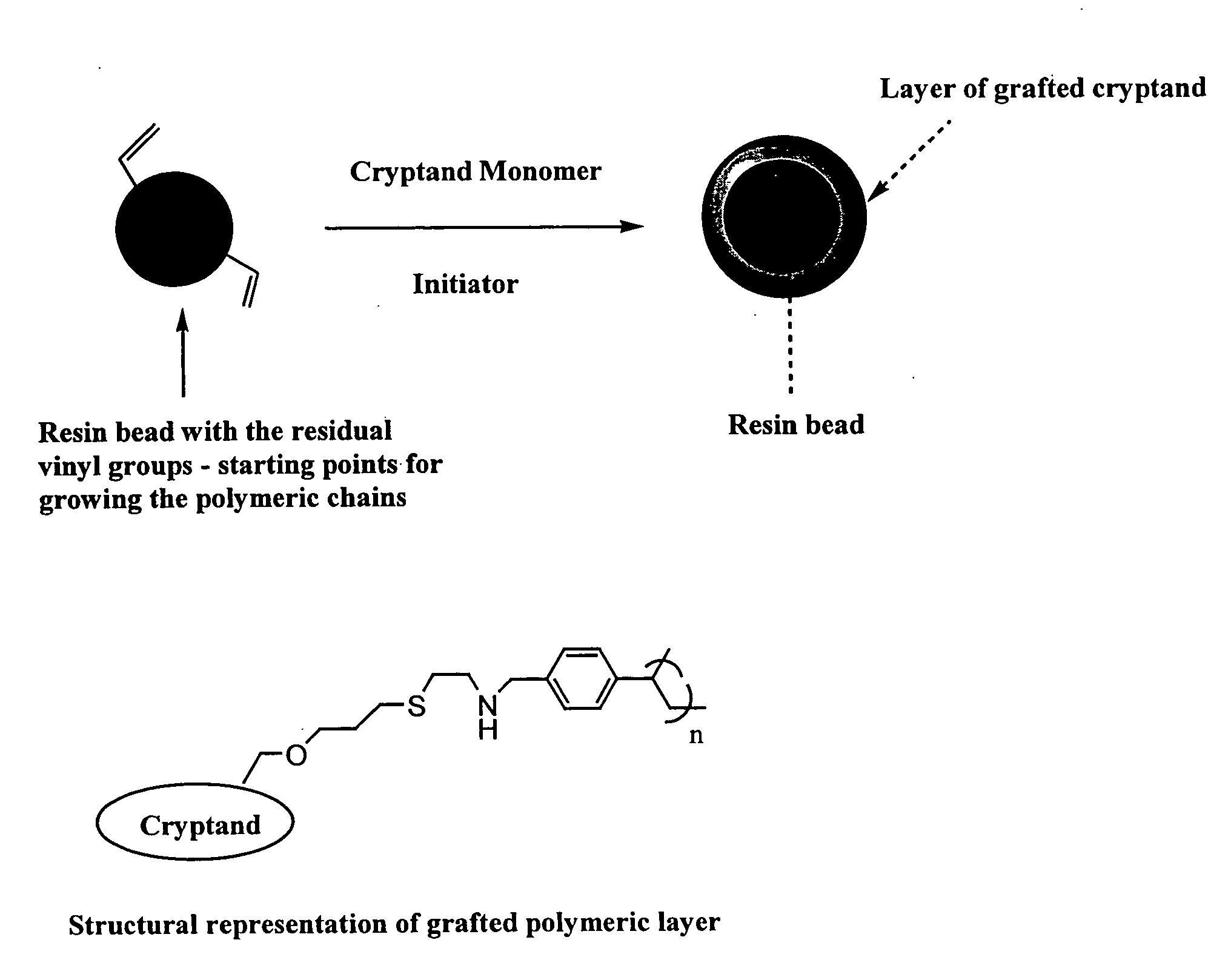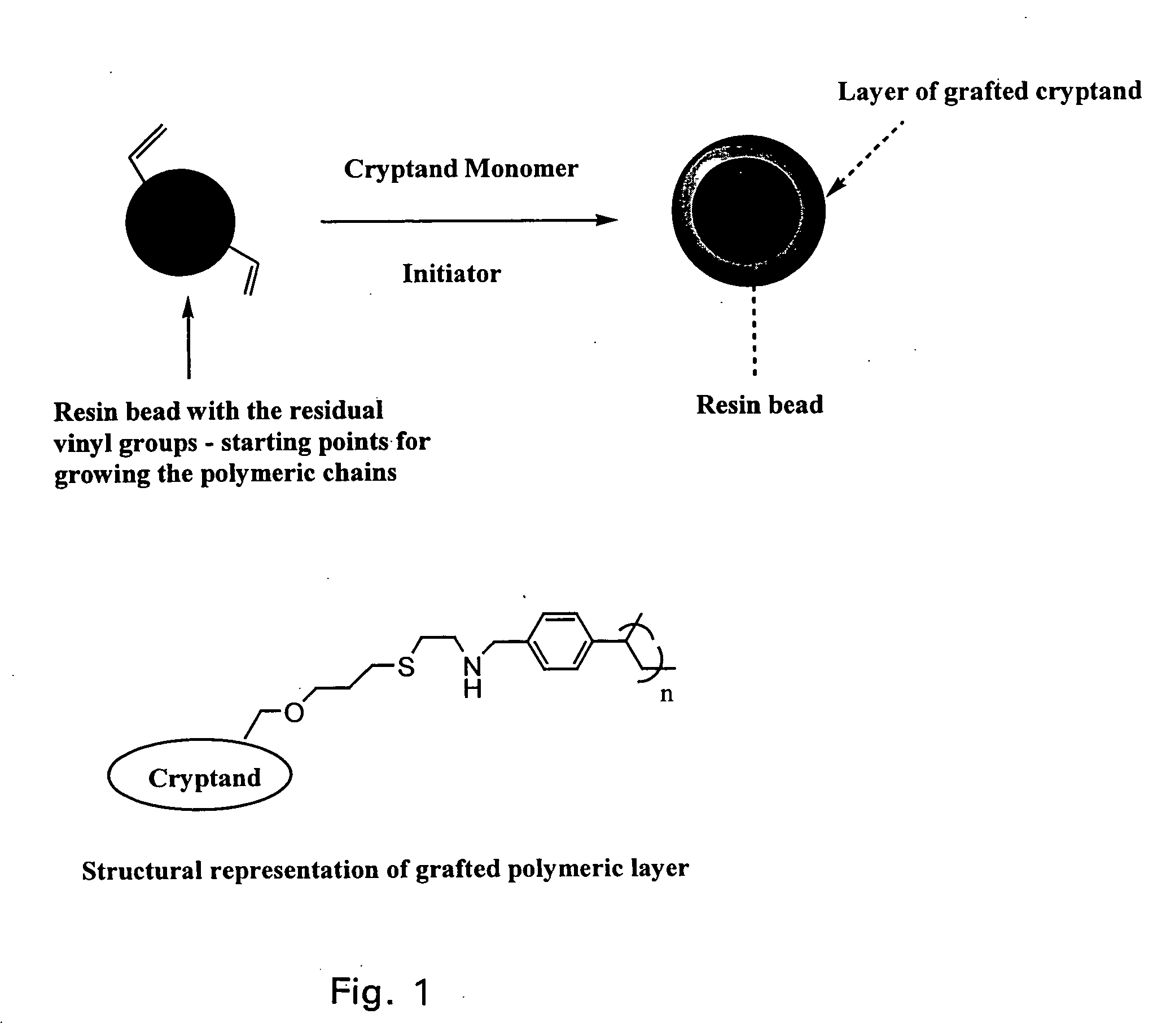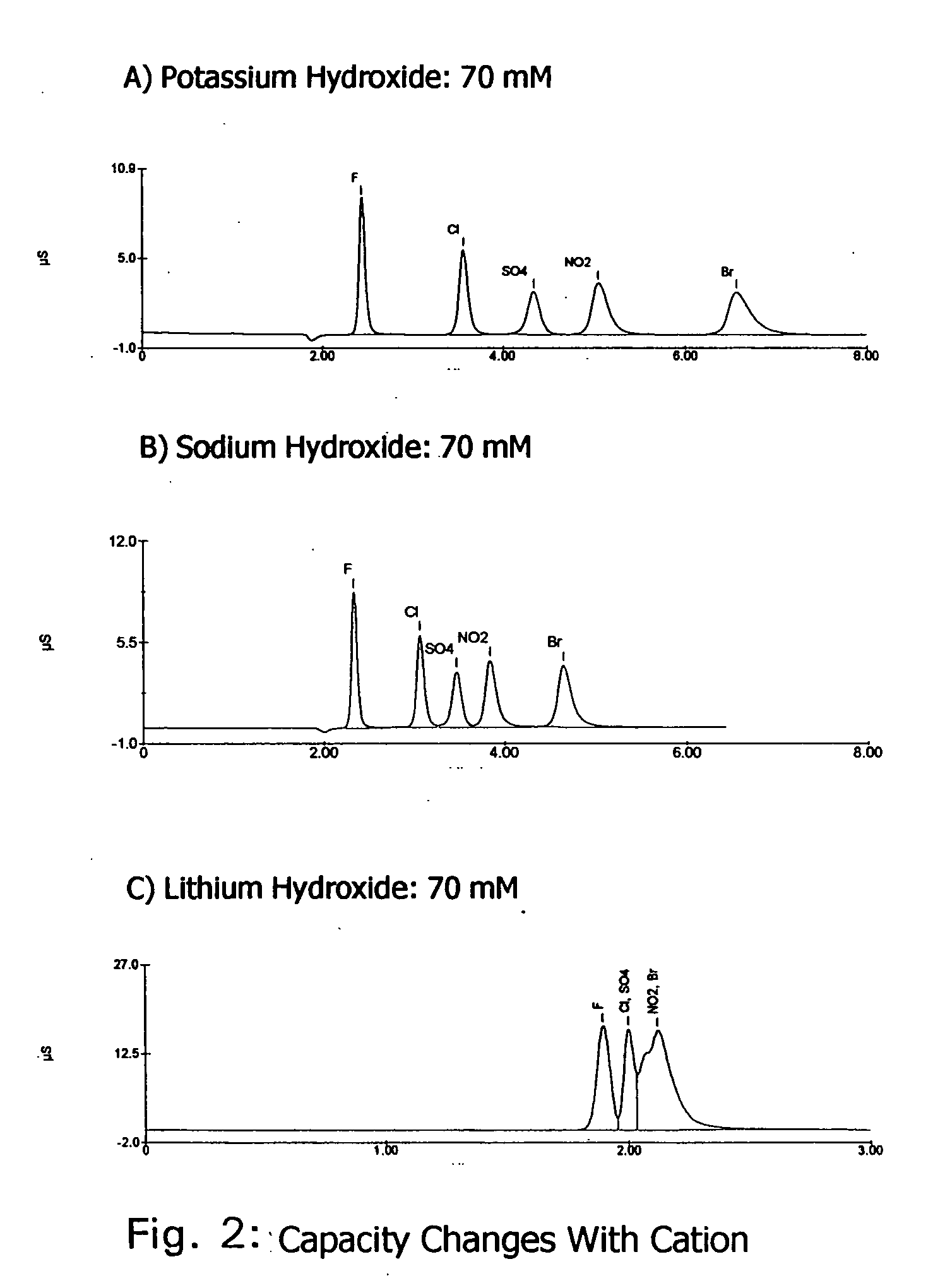Ion exchange cryptands covalently bound to substrates
a technology of ion exchange cryptands and substrates, applied in the direction of water/sewage treatment by ion exchange, chemical/physical processes, component separation, etc., can solve the problems of limited application range of the majority of adsorbed materials, limited use range of these materials at elevated temperatures, and difficulty in synthesis of functionalized macrocycles
- Summary
- Abstract
- Description
- Claims
- Application Information
AI Technical Summary
Benefits of technology
Problems solved by technology
Method used
Image
Examples
example 1
[0070] This example describes a two-stage synthesis of a derivatized cryptand according to reaction scheme (5).
Methods for Derivatization of Allyl Cryptand 1 Procedure for the Synthesis of Cryptands 2 and 3 Scheme (5)
[0071] The procedure for the synthesis of allylic [2.2.2] cryptand is based on the reported method (Babb, D. A., et al., Journal of Heterocyclic Chemistry 23: 609-613 (1986)). 12 g of allyl-derivatized cryptand was dissolved in 70 ml of ethanol and 12 g of 2-aminoethanethiol hydrochloride was added to the reaction mixture. Reactor was purged with nitrogen. Solution was brought to reflux and 65 mg of AIBN was added. UV irradiation at 254 nm wave length was applied. Reaction mixture was stirred under reflux and irradiated for eight hours. After every two hour period, a new portion of AIBN (65 mg) was added to the reaction mixture. Reaction is being monitored using TLC on neutral aluminum oxide and CH2Cl2 / THF / MeOH; 10 / 5 / 1 as eluent.
[0072] Solvent was evaporated under re...
example 2
[0073] This example describes functionalizing the support substrate Z by depositing a hydrophilic layer for binding to a derivatized cryptand.
Hydrophilic Layer Formed on Surface of Polymeric Particles Suitable for Grafting of Cryptand Monomer
[0074] 2.3 g of a dried 55% cross-linked macroporous resin (substrate is ethylvinylbenzene cross-linked with 55% divinylbenzene, resin preparation described in U.S. Pat. No. 4,224,415) was dispersed in 3.3 g of tertiary butyl alcohol (Fluka). To this slurry was added 0.37 g of vinylbenzylacetate made in house, 1 g of vinylacetate (Aldrich) and 0.092 g of Vazo 64 initiator (Dupont). The entire material was dispersed homogeneously and then placed in an oven at 60° C. for 18 hours. The resultant polymeric material was washed with water, acetone, water and finally with acetone. After hydrolysis, this material is now ready for grafting with a cryptand monomer as shown in Example 3 below.
example 3
[0075] This example describes binding of the derivatized cryptand of Example 1 to the functionalized Z of Example 2.
Cryptand Monomer is Attached to Polymeric Particles Suitable for Use as a Packing
[0076] 2.35 g of a dried 55% cross-linked macroporous resin with preformed hydrophilic layer (substrate is ethylvinylbenzene cross-linked with 55% divinylbenzene, resin preparation described in U.S. Pat. No. 4,224,415) was dispersed in 3.4 grams of water and 0.5 g of 0.1 M methanesulfonic acid was added. To this slurry was added 0.5 g of cryptand monomer and 0.2 g of azobiscyanopentanoic acid (Fluka). The entire material was dispersed homogeneously and then placed in an oven at 50° C. for 20 hours. The resultant polymeric material from above was washed with acetone followed by methanol, water, and IM potassium hydroxide. The resin was then packed in an analytical column using standard methods and apparatus at 6000 psi for 15 minutes. This polymeric column is suitable for chromatographic ...
PUM
| Property | Measurement | Unit |
|---|---|---|
| wave length | aaaaa | aaaaa |
| pH | aaaaa | aaaaa |
| volume | aaaaa | aaaaa |
Abstract
Description
Claims
Application Information
 Login to View More
Login to View More - R&D
- Intellectual Property
- Life Sciences
- Materials
- Tech Scout
- Unparalleled Data Quality
- Higher Quality Content
- 60% Fewer Hallucinations
Browse by: Latest US Patents, China's latest patents, Technical Efficacy Thesaurus, Application Domain, Technology Topic, Popular Technical Reports.
© 2025 PatSnap. All rights reserved.Legal|Privacy policy|Modern Slavery Act Transparency Statement|Sitemap|About US| Contact US: help@patsnap.com



